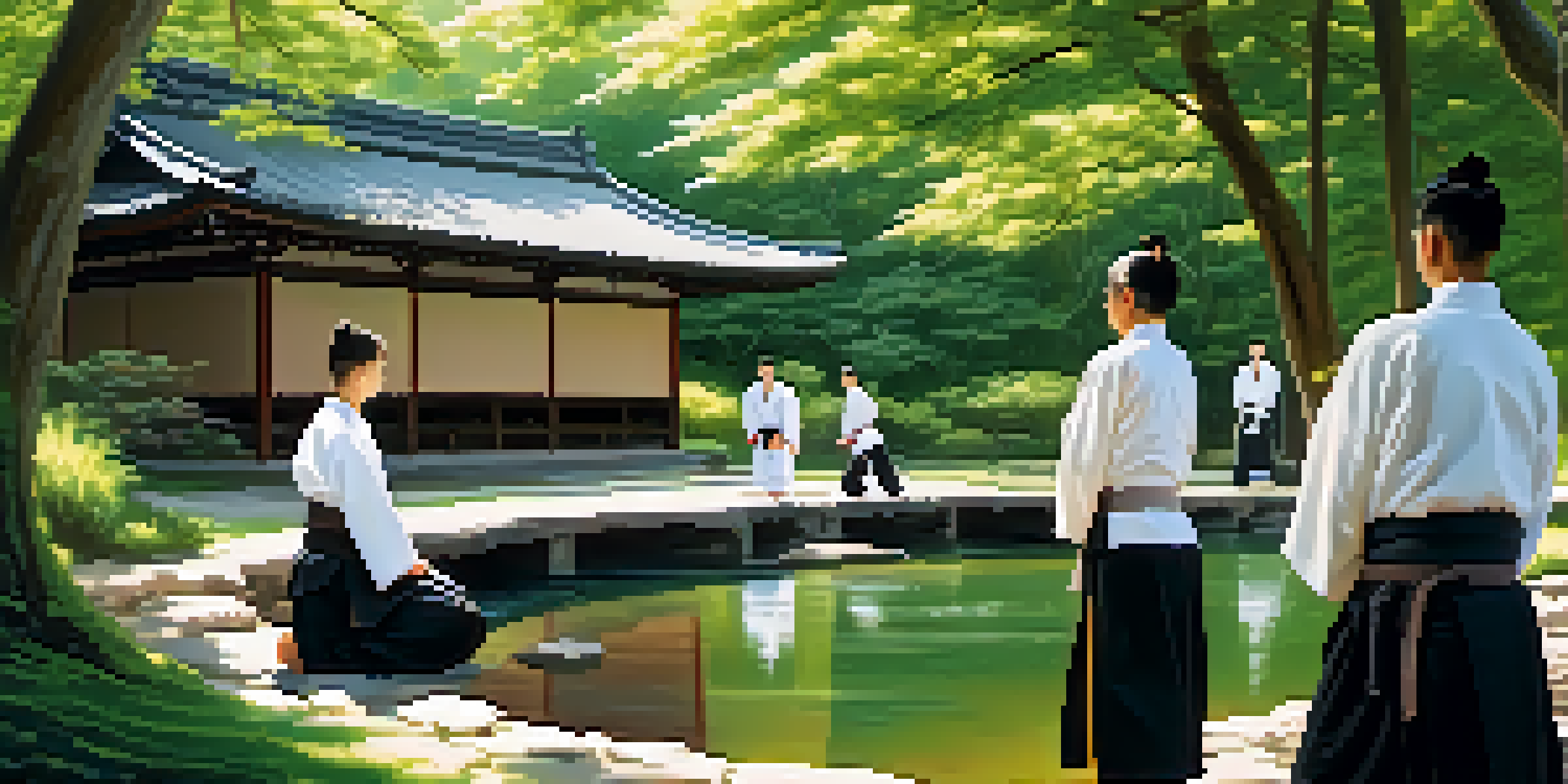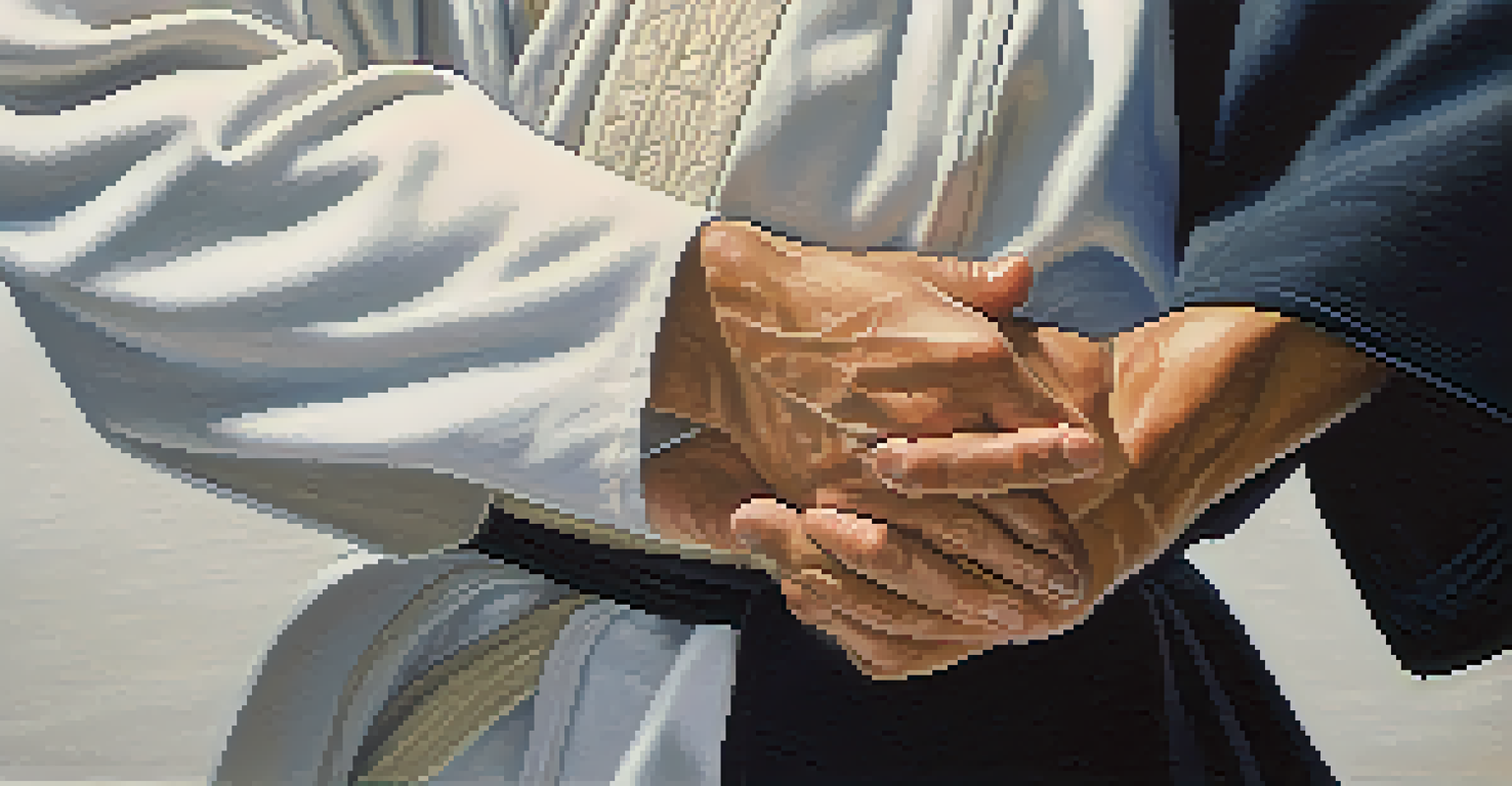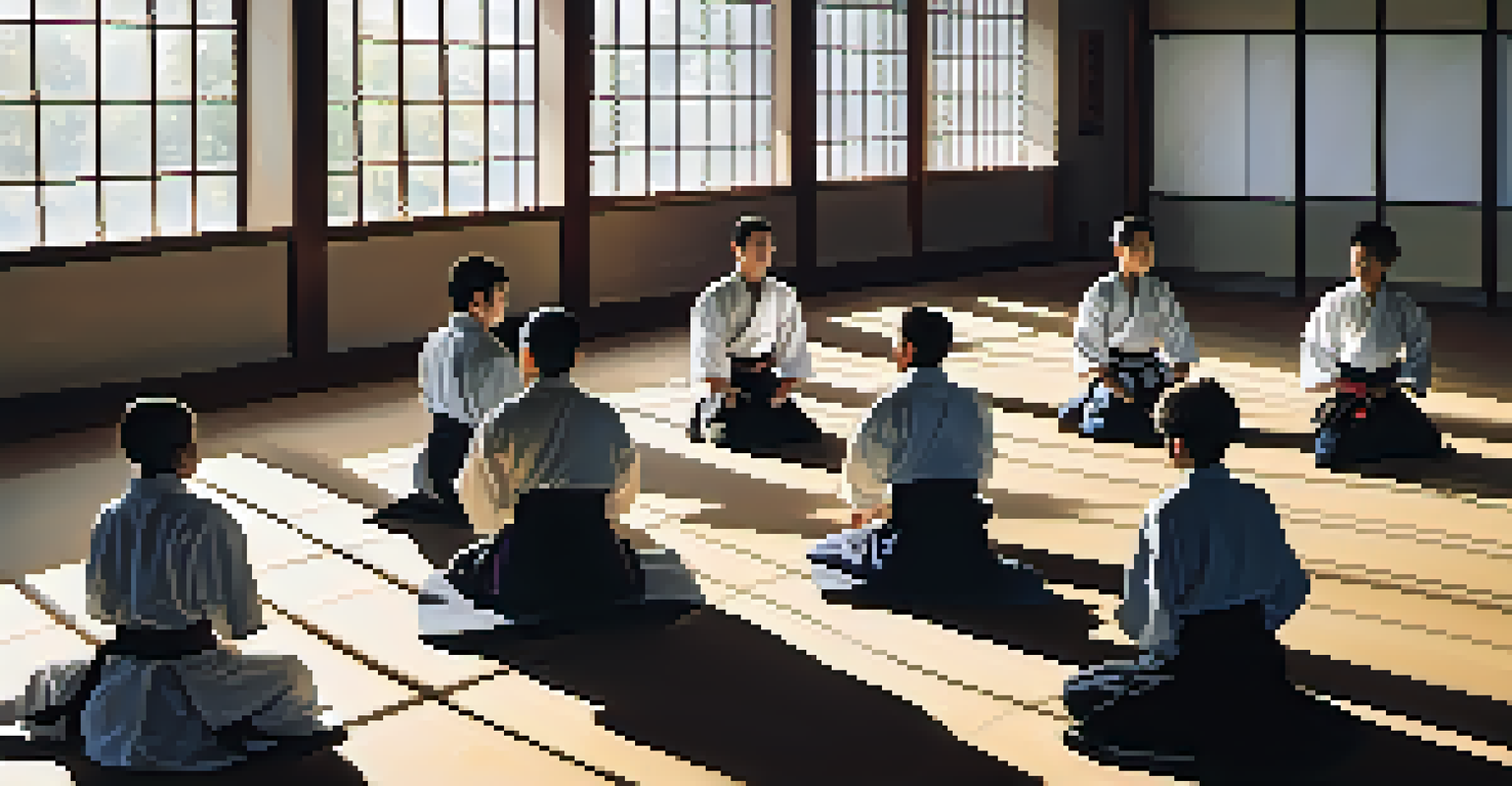The Life of O-Sensei Morihei Ueshiba and Aikido's Origins

Who Was O-Sensei Morihei Ueshiba?
O-Sensei Morihei Ueshiba, born in 1883, is the founder of Aikido, a martial art that emphasizes harmony and self-defense. His journey began in Japan, where he trained in various classical martial arts, developing a deep understanding of combat techniques and philosophy. Ueshiba was not just a martial artist; he was a spiritual seeker, which profoundly influenced his teachings and the creation of Aikido.
The purpose of Aikido is to create a world where everyone can live in peace and harmony.
His experiences during the tumultuous times of early 20th-century Japan, including witnessing the devastation of war, shaped his belief in the importance of peace and reconciliation. This led him to seek a path that would transcend mere fighting, focusing instead on the unity of body, mind, and spirit. Ueshiba's vision was to create a martial art that could promote peace rather than conflict.
As he matured, Ueshiba's teachings evolved into what we now know as Aikido, which translates to 'the way of harmonizing with the spirit.' His philosophy encouraged practitioners to develop not just their physical skills but also their character, emphasizing compassion and understanding in every encounter.
The Birth of Aikido: A New Martial Art
Aikido began to take shape in the early 20th century, particularly after Ueshiba's spiritual awakening in the 1920s. Influenced by his studies of various martial arts, including Daito-ryu Aiki-jujutsu, he sought to combine the effectiveness of these techniques with his philosophy of peace. This unique blend laid the foundation for Aikido's principles and practices.

In 1942, Ueshiba officially named his art 'Aikido,' marking a significant moment in martial arts history. While traditional jiu-jitsu and karate often focus on defeating an opponent, Aikido emphasizes blending with an attacker's movements and redirecting their energy. This approach not only protects the defender but also minimizes harm to the attacker, reflecting Ueshiba's core belief in harmony.
O-Sensei Ueshiba: Founder of Aikido
Morihei Ueshiba created Aikido, blending martial arts with a philosophy of peace and harmony.
As Aikido gained popularity, Ueshiba began teaching students, spreading his philosophy and techniques. His teachings went beyond physical practice; they included lessons on personal growth, promoting a way of life that encouraged practitioners to seek inner peace and harmony with others.
Ueshiba's Spiritual Journey and Its Influence
Ueshiba's life was profoundly influenced by his spiritual journey, particularly his encounters with various religious and philosophical systems. His studies in Shinto, Buddhism, and the teachings of the Omoto-kyo religion played a crucial role in shaping his worldview. This spiritual foundation was integral to his understanding of Aikido, where martial practice becomes a path to personal enlightenment.
Aikido is not about defeating others; it is about embracing and harmonizing with them.
Through his spiritual explorations, Ueshiba developed the concept of 'aiki,' which translates to the harmonious blending of energies. This principle is central to Aikido, where practitioners learn to harmonize with their opponent's movements rather than oppose them. Ueshiba believed that true strength lies in the ability to connect with others, transcending the duality of conflict.
Ueshiba's teachings encouraged students to cultivate not just physical skills but also a deep sense of awareness and compassion. His belief that martial arts could contribute to world peace resonated with many, making Aikido not just a physical discipline, but a way of life centered on mutual respect and understanding.
Aikido's Growth and Global Influence
Following World War II, Aikido began to spread beyond Japan, captivating martial arts enthusiasts worldwide. Its unique approach to conflict resolution and personal discipline attracted practitioners from diverse backgrounds. As students trained in Aikido, they often found themselves drawn to its philosophical underpinnings, creating a global community centered around peace and harmony.
Dozens of Ueshiba's students traveled abroad to teach Aikido, establishing dojos in various countries and sharing the art's principles. This grassroots movement helped Aikido become a recognized martial art practiced in many cultures, each adding its unique flavor to the discipline. The emphasis on non-violence and personal growth appealed to many, making it an attractive alternative to more aggressive martial arts.
Aikido's Principles of Harmony
Central to Aikido are principles like 'aiki' and 'ukemi,' promoting the merging of energies and safe falling to foster compassion and community.
Today, Aikido is practiced by people of all ages and backgrounds, emphasizing its universal appeal. The art continues to grow and adapt, with practitioners exploring its applications in self-defense, personal development, and even conflict resolution in everyday life.
The Core Principles of Aikido
At the heart of Aikido are several core principles that define the practice. One of the most significant is 'aiki,' or the merging of energies, which encourages practitioners to unite with their opponent rather than oppose them. This concept reflects Ueshiba's philosophy of harmony and can be applied not only in martial arts but also in daily interactions with others.
Another essential principle is the idea of 'ukemi,' or the art of falling and receiving. This practice teaches students how to be both a good partner and a good opponent. By learning to fall safely and gracefully, practitioners develop trust and respect for each other, fostering a sense of community within the dojo.
Lastly, Aikido emphasizes the importance of mindfulness and presence. Practitioners are encouraged to cultivate awareness of their surroundings and their own inner state, which enhances their ability to respond to challenges with clarity and composure. This focus on the mind-body connection not only improves martial skills but also enriches personal growth.
Aikido in Modern Times: Challenges and Adaptations
As the world changes, so does Aikido, which faces challenges in maintaining its traditional roots while adapting to modern society. Many dojos are exploring ways to make Aikido more accessible to people with varying levels of physical ability, ensuring that its teachings can reach a broader audience. This evolution is crucial for keeping the art relevant and engaging for future generations.
Additionally, Aikido instructors are increasingly incorporating elements of mental and emotional training into their curricula. This shift acknowledges the importance of psychological resilience in today's fast-paced world and aligns with Ueshiba's original vision of personal development through training. By addressing the whole person, Aikido can provide valuable tools for navigating modern life.
Aikido's Global Influence
Since its inception, Aikido has spread worldwide, attracting diverse practitioners drawn to its emphasis on personal growth and conflict resolution.
Despite these adaptations, the essence of Aikido remains intact, rooted in the principles of harmony and respect. For practitioners, the journey continues as they seek to embody Ueshiba's teachings and apply them to their lives, both on and off the mat.
The Legacy of O-Sensei Morihei Ueshiba
O-Sensei Morihei Ueshiba's legacy is profound, extending far beyond the martial arts world. His teachings continue to inspire countless individuals, reminding them of the importance of peace, compassion, and personal growth. As Aikido practitioners train, they not only hone their physical skills but also cultivate the qualities that Ueshiba championed throughout his life.
Many of Ueshiba's students have become influential figures in their own right, spreading Aikido's philosophy and practices across the globe. Their dedication to preserving and sharing his teachings ensures that the spirit of Aikido lives on, adapting and evolving while staying true to its core principles. Each dojo represents a community that carries forward Ueshiba's vision of harmony.

In a world often fraught with conflict, Ueshiba's legacy serves as a reminder that martial arts can be a powerful tool for personal transformation and societal change. As long as there are individuals committed to the path of Aikido, O-Sensei's spirit will continue to inspire future generations, fostering a culture of understanding and peace.